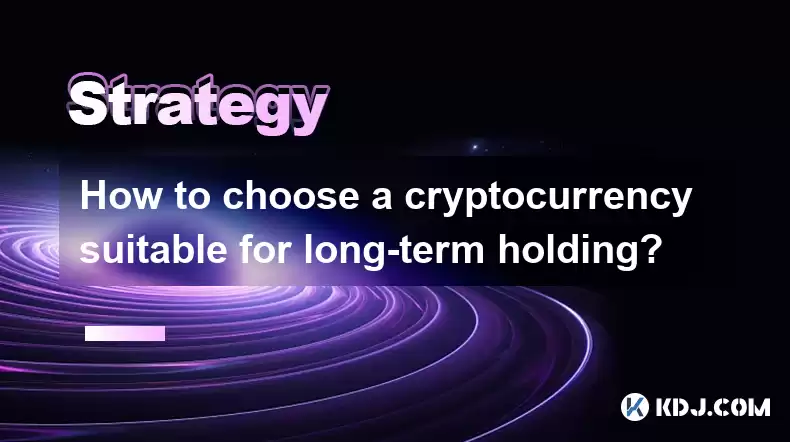-
 Bitcoin
Bitcoin $115000
0.12% -
 Ethereum
Ethereum $3701
4.50% -
 XRP
XRP $3.081
2.99% -
 Tether USDt
Tether USDt $0.0000
-0.01% -
 BNB
BNB $767.9
1.45% -
 Solana
Solana $169.5
3.13% -
 USDC
USDC $0.9999
0.01% -
 Dogecoin
Dogecoin $0.2106
4.30% -
 TRON
TRON $0.3334
1.62% -
 Cardano
Cardano $0.7564
2.54% -
 Stellar
Stellar $0.4165
0.76% -
 Hyperliquid
Hyperliquid $38.75
0.25% -
 Sui
Sui $3.593
3.00% -
 Chainlink
Chainlink $17.08
3.59% -
 Bitcoin Cash
Bitcoin Cash $573.6
4.35% -
 Hedera
Hedera $0.2508
-0.84% -
 Avalanche
Avalanche $23.07
6.46% -
 Ethena USDe
Ethena USDe $1.001
-0.02% -
 Litecoin
Litecoin $120.8
8.17% -
 UNUS SED LEO
UNUS SED LEO $8.943
-0.32% -
 Toncoin
Toncoin $3.400
-5.60% -
 Shiba Inu
Shiba Inu $0.00001255
1.54% -
 Uniswap
Uniswap $9.908
6.32% -
 Polkadot
Polkadot $3.718
2.10% -
 Monero
Monero $303.0
-0.74% -
 Dai
Dai $0.9999
-0.02% -
 Bitget Token
Bitget Token $4.392
0.91% -
 Cronos
Cronos $0.1403
6.31% -
 Pepe
Pepe $0.00001076
1.13% -
 Aave
Aave $267.2
1.80%
How to choose a cryptocurrency suitable for long-term holding?
For long-term crypto success, prioritize thorough research: analyze the project's fundamentals, assess market cap and adoption, evaluate technological innovation, and gauge community strength before investing.
Mar 15, 2025 at 08:55 am

Key Points:
- Understanding Your Risk Tolerance: Long-term holding requires patience and the ability to withstand market volatility. Assess your risk appetite before investing.
- Fundamental Analysis: Dive deep into the project's whitepaper, team, technology, and market potential. Look for strong fundamentals and a clear roadmap.
- Market Capitalization and Adoption: Consider the cryptocurrency's market cap and level of adoption. Larger market caps generally indicate greater stability, but smaller caps might offer higher growth potential (with higher risk).
- Technological Innovation: Evaluate the underlying technology and its potential for disruption. Is it solving a real-world problem? Does it offer unique advantages?
- Community and Development: A strong, active community and consistent development are vital signs of a project's long-term viability.
How to Choose a Cryptocurrency Suitable for Long-Term Holding?
Choosing a cryptocurrency for long-term holding is a crucial decision requiring thorough research and careful consideration. It's not about chasing quick profits, but rather identifying projects with strong potential for sustained growth. Let's explore the key factors to consider.
1. Defining Your Risk Tolerance:
Before investing in any cryptocurrency, honestly assess your risk tolerance. Long-term holding implies weathering market downturns, which can be significant in the volatile crypto world. Only invest what you can afford to lose and don't let emotions dictate your investment decisions. Consider diversifying your portfolio across different cryptocurrencies to mitigate risk.
2. Conducting Fundamental Analysis:
Thorough fundamental analysis is paramount. This involves delving into the project's whitepaper, understanding its core technology, and evaluating the team behind it. Look for a clear roadmap outlining future development plans and milestones. Analyze the project's utility – what problem does it solve? Is there a real-world application for the cryptocurrency?
3. Assessing Market Capitalization and Adoption:
Market capitalization provides an indication of a cryptocurrency's size and overall value. Larger market caps often suggest greater stability, but smaller cap cryptocurrencies might offer higher growth potential, albeit with significantly higher risk. Analyze the level of adoption – how many users are actively using the cryptocurrency? Increased adoption generally indicates a healthier ecosystem.
4. Evaluating Technological Innovation:
Is the cryptocurrency based on innovative technology that offers a unique advantage over existing solutions? Does it address a significant market need or problem? Investigate the underlying technology – is it scalable, secure, and efficient? A truly disruptive technology has the potential for long-term growth.
5. Examining Community and Development:
A vibrant and engaged community is a positive sign. An active community provides support, feedback, and contributes to the project's overall development. Regular updates, transparent communication, and consistent development efforts from the core team are crucial indicators of a project's long-term viability. Check forums, social media, and developer activity to gauge community sentiment.
6. Considering Regulatory Landscape:
The regulatory landscape for cryptocurrencies is constantly evolving. Be aware of the legal and regulatory environment in your jurisdiction and the potential impact on your chosen cryptocurrency. Some jurisdictions are more crypto-friendly than others.
7. Diversification Strategies:
Don't put all your eggs in one basket. Diversify your holdings across several cryptocurrencies with different use cases and risk profiles. This can help mitigate losses if one investment performs poorly.
Step-by-Step Guide to Choosing a Cryptocurrency for Long-Term Holding:
- Identify your investment goals: What are you hoping to achieve with this investment?
- Research potential cryptocurrencies: Explore various projects and their whitepapers.
- Assess the team and their track record: Look for experienced and reputable individuals.
- Analyze the technology and its potential: Is it innovative and scalable?
- Evaluate community engagement and development activity: Is the project actively developed and supported?
- Consider the market capitalization and adoption rate: Is it a well-established project or a high-risk, high-reward opportunity?
- Monitor the regulatory landscape: Understand the legal implications of your investment.
- Diversify your portfolio: Spread your investments across different projects.
- Regularly review your portfolio: Monitor performance and make adjustments as needed.
- Stay informed about market trends: Keep up-to-date on news and developments in the crypto space.
Frequently Asked Questions:
Q: What is the safest cryptocurrency for long-term holding?
A: There is no single "safest" cryptocurrency. Risk is inherent in all crypto investments. The perceived safety depends on factors like market capitalization, adoption, and technological maturity. Larger, more established cryptocurrencies generally carry less risk but may offer lower growth potential compared to smaller, newer projects.
Q: How long is considered "long-term" in cryptocurrency investing?
A: Long-term in cryptocurrency is generally considered to be several years, even a decade or more. This contrasts with short-term trading strategies focused on quick profits. The longer the timeframe, the greater the potential for growth, but also the greater the potential for volatility.
Q: Should I invest in meme coins for long-term holding?
A: Meme coins are highly speculative and volatile. Their value is often driven by hype and social media trends, not by underlying fundamentals. While some have experienced significant short-term gains, the risk of substantial losses in the long term is considerably high. Therefore, investing in meme coins for long-term holding is generally not recommended unless you have a very high-risk tolerance.
Q: How can I minimize risk when holding cryptocurrency long-term?
A: Minimize risk by conducting thorough research, diversifying your portfolio, only investing what you can afford to lose, and regularly monitoring your investments. Avoid emotional decision-making, and stick to your investment strategy. Consider dollar-cost averaging to reduce the impact of volatility.
Q: What are some red flags to watch out for when choosing a cryptocurrency for long-term holding?
A: Red flags include a lack of transparency, an anonymous or inexperienced development team, a poorly written or non-existent whitepaper, a lack of community engagement, and unrealistic promises of high returns. Also, be wary of projects with significant regulatory hurdles or those exhibiting signs of a pump-and-dump scheme.
Disclaimer:info@kdj.com
The information provided is not trading advice. kdj.com does not assume any responsibility for any investments made based on the information provided in this article. Cryptocurrencies are highly volatile and it is highly recommended that you invest with caution after thorough research!
If you believe that the content used on this website infringes your copyright, please contact us immediately (info@kdj.com) and we will delete it promptly.
- Solana Memecoin Launchpads: A Wild Ride with LetsBONK.fun Leading the Charge
- 2025-08-05 17:30:12
- Crypto Volatility & Token Unlocks: Navigating the Storm
- 2025-08-05 16:30:13
- SUI Traders Eye Discount: Is Now the Time to Buy?
- 2025-08-05 16:30:13
- Bitcoin Price in August: Will the BTC Rally Continue?
- 2025-08-05 17:35:12
- Decentralized Perpetuals Soar: Volume Hits All-Time High, Leaving CEXs in the Dust?
- 2025-08-05 16:50:12
- Decoding MYCUSD: Crypto Forecasting for Digital Asset Success
- 2025-08-05 16:50:12
Related knowledge

How to avoid common crypto investment mistakes?
Jul 13,2025 at 01:35am
Understanding the Risks of Crypto InvestmentInvesting in cryptocurrency can be highly rewarding, but it also comes with significant risks. One of the ...

What is a long-short crypto strategy?
Jul 15,2025 at 10:56am
Understanding the Basics of a Long-Short Crypto StrategyA long-short crypto strategy is an investment approach where traders simultaneously take long ...

What is a long-short crypto strategy?
Jul 11,2025 at 01:28pm
Understanding the Basics of Long-Short Crypto StrategyA long-short crypto strategy is an investment approach where traders take both long and short po...

How to use the RSI indicator for crypto?
Jul 12,2025 at 03:56pm
Understanding the RSI Indicator in Cryptocurrency TradingThe Relative Strength Index (RSI) is a momentum oscillator used to measure the speed and chan...

Is copy trading a good strategy for crypto beginners?
Jul 12,2025 at 08:28am
Understanding Copy Trading in the Cryptocurrency MarketCopy trading is a strategy where novice traders replicate the trades of experienced investors a...

How to build a crypto portfolio with $1000?
Jul 13,2025 at 08:14pm
Understanding the Basics of Cryptocurrency InvestmentBuilding a crypto portfolio with $1000 starts with understanding the fundamentals of cryptocurren...

How to avoid common crypto investment mistakes?
Jul 13,2025 at 01:35am
Understanding the Risks of Crypto InvestmentInvesting in cryptocurrency can be highly rewarding, but it also comes with significant risks. One of the ...

What is a long-short crypto strategy?
Jul 15,2025 at 10:56am
Understanding the Basics of a Long-Short Crypto StrategyA long-short crypto strategy is an investment approach where traders simultaneously take long ...

What is a long-short crypto strategy?
Jul 11,2025 at 01:28pm
Understanding the Basics of Long-Short Crypto StrategyA long-short crypto strategy is an investment approach where traders take both long and short po...

How to use the RSI indicator for crypto?
Jul 12,2025 at 03:56pm
Understanding the RSI Indicator in Cryptocurrency TradingThe Relative Strength Index (RSI) is a momentum oscillator used to measure the speed and chan...

Is copy trading a good strategy for crypto beginners?
Jul 12,2025 at 08:28am
Understanding Copy Trading in the Cryptocurrency MarketCopy trading is a strategy where novice traders replicate the trades of experienced investors a...

How to build a crypto portfolio with $1000?
Jul 13,2025 at 08:14pm
Understanding the Basics of Cryptocurrency InvestmentBuilding a crypto portfolio with $1000 starts with understanding the fundamentals of cryptocurren...
See all articles

























































































